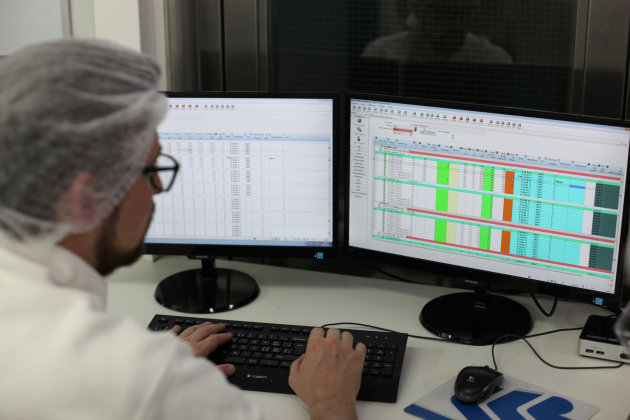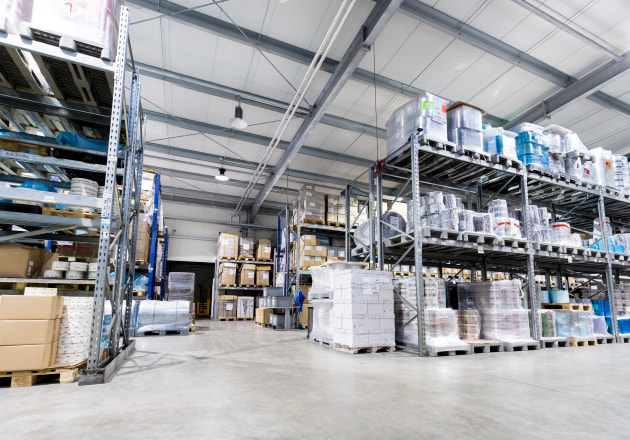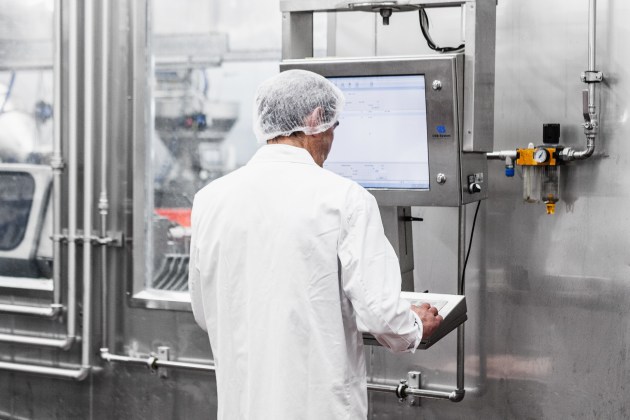Product planning systems are crucial for the food and beverage industry. Systems that are directly integrated in the ERP software are most suitable.
Top quality, guaranteed freshness, just-in-time delivery – and all of this at a favourable price. The customers of food and beverage producers are quite demanding. Production processes are becoming ever more complex, as consumers ask for a wide variety of products with different flavours, ingredients and packaging. In addition, the time between order entry and delivery is getting shorter and shorter. What's more, urgent orders often have to be squeezed in, with trade, in particular, expecting even short-term orders to be delivered on time.
This is when things start to get hectic: Which order must be completed first? Do we still have enough raw materials in stock? Are the right labels available in sufficient quantities? How long will the packaging lines be running? It goes without saying that in such situations, in light of proliferating variants, as well as increasing production volumes, hardly any human would be able to keep track.
All areas must be included
Traditional planning tools also have difficulties in balancing the effects of short-notice shifts or unplanned machine and system downtimes. This often results in an inaccurate overall picture that ultimately leads to inefficiencies, high costs and reduced delivery reliability.
IT-aided production planning and control systems developed specifically for the food and beverage production are more precise and yet more flexible. Ideally, enterprises do not use standalone solutions, but a program integrated in their ERP system.
Only the ERP system as a data turntable is capable of seamlessly incorporating all key company areas like procurement, inventory management, coverage planning and sales, as well as the production defaults and the single production areas in the planning process. Other important criteria that a production planning system must meet:
- It ensures that raw materials, auxiliary supplies and operating materials are planned optimally, and that the right raw materials are supplied with the right quality at the right time and at the right machines.
- The system facilitates high-level planning and detail planning.
- It plans the optimal production sequence so the orders are produced in such a way that the required set-up times are reduced to a minimum. This is particularly important in companies with many products. The important influencing factors for sequence planning are colour, granularity and ingredients (allergens / GMO) as well as operational requirements. The sequences are default values that should be easily changeable, and the impacts on the production process should be identifiable immediately.
- The system must have flexible tools so it can fit in short-notice changes appropriately.
- It must be possible to deploy the system in small and large-scale planning environments.
- It ensures a constant high-capacity utilisation at all manufacturing levels and in the individual departments. This will prevent overtime hours in one department, while the staff in another department is not working at full capacity.
- Maintenance orders must be considered in the planning too.
- It optimises the internal inventory management.
- It must be adjustable to the planners and their way of working.
Software orchestrates the production – short-term, mid-term and long-term

Besides these “must-haves”, it is vital that the software provides several planning scenarios. Only then can it orchestrate the production in an optimal manner while leaving sufficient flexibility for the planners.
For example, production planning in the CSB-System supplies long-term, mid-term and short-term planning scenarios. This highly flexible planning tool enables you to schedule, organise and control all production resources like man, machine and material, in an optimal manner even in difficult conditions caused by volatile order behaviour and a vast variety of units.
This secures the required freshness, optimal use of machine capacities and a higher throughput speed – and maximum delivery readiness.
A customisable planning matrix presents a clearly structured overview of relevant information such as orders, available quantities, bills of materials, restrictions and procedures linked with time dimensions. Be it long-term, mid-term or short-term: planning is always based on the same program.
Usually, the process has three stages: first, the planning matrix is established – the planner or materials requirement planner can then revise the calculated production quantity. After that, the production plan is prepared for the next stages in the planning process. Every company defines itself, usually on product group basis, what it considers as long-term, mid-term or short-term production planning. The important thing is that the planner is supported with every time horizon.
Long-term planning
The production plan is established at a yearly, quarterly or monthly level, based on the statistical sales data. It is supplemented with the budget values and the liquidity planning based on that. Long-term planning is based on the order forecast and the resulting capacity utilisation.
The sales data for all customers in a year-on-year comparison are incorporated in the long-term production planning. The information derived from that can be applied for liquidity planning and framework agreements with vendors. Long-term planning also helps with strategical investment decisions, for example, when it comes to buying new machines.
Mid-term planning
This is about required raw materials, with the right quantity and the right quality, being actually available in the operation at time X. Mid-term planning is based on the plan values of long-term planning and is created for instance on week level. The planned capacities are aligned with the available capacities, and a production and process plan is calculated.
The capacity and demand-oriented production and machine allocation plan lists the requirements for material, man and machines for the requested periods. The optimised recipes for the complete weekly production plan are taken into account in the procurement optimisation in order to reduce material costs.
Short-term planning
Short-term planning considers the results of the two previous planning stages and supplements planning with operational data from the ERP system and from intralogistics. The decisive question here is, how do I produce my orders with maximum utilisation rate and with the minimum use of resources? Production order management converts the planning results into production orders.
Procurement and sales orders as well as inventory data are incorporated online.The process-optimised machine and line allocation is predefined, and the production progress can be monitored in real time at the control station. Maintenance and trouble management is integrated.
Dependencies become transparent – and costs are reduced
At the end of the planning process, only a few questions remain unanswered: The production orders are distributed automatically to the machines and lines in production and packaging, the staff is assigned automatically in accordance with qualification and availability.
So, the perfect plan then? No, because basically it doesn’t exist: public holidays, campaigns and finally the weather have a huge influence on sales, and thus directly on production planning. A sudden summer high for instance spurs the sale of light dishes, barbecue products and summer drinks. However, if the weather is cooler than expected, perhaps more roast beef is sold.

In that case, it is good if the software not only includes historic data but is also flexible enough to modify planning.
One of the biggest advantages of CSB-Production Planning is that it visualises dependencies, which may be related to the manufacturing method, the machine capacities, the staff or the products.
A possible under or excess coverage as well as production delays can be identified quickly so that production management can take corrective actions in time. As a result, overtime work of the staff can be reduced, set-up times and unproductive times are minimised, and costs are cut substantially.
But has everything been completed as planned?
Good planning is half the battle, as the saying goes. However, even the best plan isn't worth a thing if it is not followed. It is therefore highly recommended to organise production planning in combination with automated data capture. This is the only way for the persons in charge to get reliable feedback in the form of target-actual comparisons – be it in their office or on the move. Using real-time production monitoring, they can intervene quickly and take control.
It also gives them important insights, for instance to optimize manufacturing processes in the long term, to make processes more efficient and to reduce rejects. In the future, that much is certain, it will be essential to produce more while consuming less.
For further ERP topics from CSB for your industry, visit the website, YouTube or LinkedIn.





